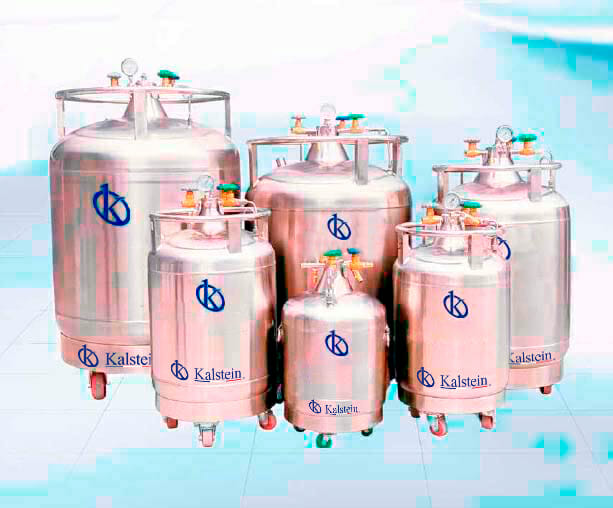The mastery of engineering applied to the design of nitrogen tanks is indisputable. The tanks are impeccably designed to store nitrogen in its liquid state at extremely low temperatures, usually around -196 degrees Celsius. This is achieved by using a dual-layer vacuum insulation system between the tank walls. This vacuum space virtually eliminates heat transfer into the tank, keeping the nitrogen in its liquid state.
Nitrogen tanks come in all sizes, from small portable units to enormous stationary tanks. They are constructed with high-durability, heat-resistant materials such as stainless steel and specific metal alloys. Despite their robust and sturdy appearance, these units are surprisingly lightweight to facilitate handling and transportation.
Are you yearning for top-tier medical equipment, ready to enhance the efficiency of your laboratory? Visit https://kalstein.it/category-product/laboratory-line/nitrogen-tanks/ to explore our high-end catalog, packed with the best finds at the most competitive prices. Excellence marks our brand, we innovate and manufacture high-precision equipment, both reliable and durable to meet your needs. Why wait? Make your quick and secure online purchase, take the leap towards the future of medical technology today. https://kalstein.it/
Optimizing Nitrogen Tank Performance
Understanding the design alone is not enough, you need to know how to optimize the performance of a nitrogen tank to ensure its longevity and increase efficiency. Adhering to standard safety practices, like avoiding overfilling and regular maintenance, can significantly enhance your nitrogen tank’s performance and result in more accurate diagnoses.
Regular review of your nitrogen tank is crucial for maintaining its maximum operational efficiency and ensuring improved clinical outcomes. First, visually inspect the tank for signs of physical damage, like dents or erosion. You should also check the pressure gauge to ensure it’s in good condition and functioning correctly.
The Diverse Applications of Nitrogen Tanks
Nitrogen tanks have a range of uses, spanning from the food industry to medicine and research. In the healthcare sector, they are used to store human cells and tissues for grafts and transplants. Here, accuracy in diagnoses and improved clinical outcomes are critical, something nitrogen tanks help to ensure.
Moreover, in scientific research, these tanks allow researchers to store biological samples over a prolonged period without compromising their integrity. As such, they play a key role in scientific and medical advancements by facilitating the study and detailed analysis of these samples.
The Importance of Liquid Nitrogen
Liquid nitrogen is a vital component in a variety of industrial applications, and the nitrogen tank enables its safe storage and transportation. With an extremely low boiling point, liquid nitrogen can achieve temperatures low enough to instantly freeze almost any material it comes into contact with.
From quick freezing of food in the food industry to its use in the cryogenic removal of benign and malignant lesions in medicine, liquid nitrogen is essential in our lives. Without a suitable nitrogen tank to preserve its liquid state and keep it at safe temperatures, these applications would not be possible.
Safety Considerations for Nitrogen Tanks
Since nitrogen tanks contain liquid nitrogen at extremely low temperatures, handling and storage must be treated with proper care. Liquid nitrogen itself can be dangerous if it comes into contact with skin or eyes, causing cryogenic burns. Therefore, safety precautions must always be followed when handling these tanks.
In the event of a leak, liquid nitrogen can evaporate rapidly, displacing oxygen in the environment, and result in asphyxiation. It can also cause overpressure in case of a rapid leak, potentially leading to an explosion. Therefore, proper training in handling nitrogen tanks and following crucial safety guidelines is of utmost importance and should not be overlooked.
Tips for Maintaining a Nitrogen Tank
Effective maintenance of a nitrogen tank can extend its lifespan and ensure peak performance. Regular inspections for damage or wear are crucial, along with the periodic replacement of essential parts.
Ensuring airtight sealing will prevent nitrogen leaks and help maintain tank efficiency. Moreover, care should always be taken when moving and transporting the tank to prevent physical damage. Ultimately, a well-maintained nitrogen tank will allow for more accurate diagnoses and improved clinical outcomes across multiple disciplines, from medicine to research.
Conclusion
Nitrogen tanks are essential devices in our modern society. Their effectiveness, however, heavily depends on their correct design, use, and maintenance. With the right information and training, they can continue to be a cornerstone piece in today’s constantly evolving industries and fields.

